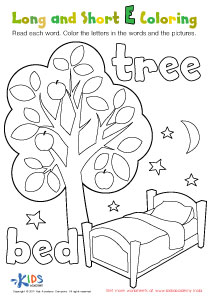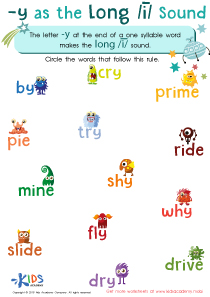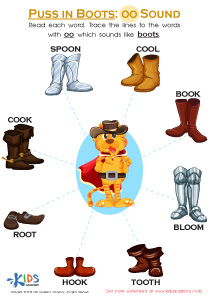Normal Middle Vowel Worksheets for Ages 3-6
4 filtered results
-
From - To
Our comprehensive Normal Middle Vowel Worksheets for ages 3-6 introduce young learners to the essential building blocks of literacy. Specifically designed for early learners, these worksheets focus on recognizing and using middle vowels in words. Engaging activities blend fun and education, ensuring kids grasp vowel sounds and their placement within words. Through colorful visuals and interactive tasks, children enhance their phonemic awareness, spelling skills, and vocabulary. Perfect for preschoolers and kindergarteners, these printables provide a solid foundation for reading and writing success, making learning enjoyable and effective. Equip your child with crucial skills through these expertly crafted worksheets.
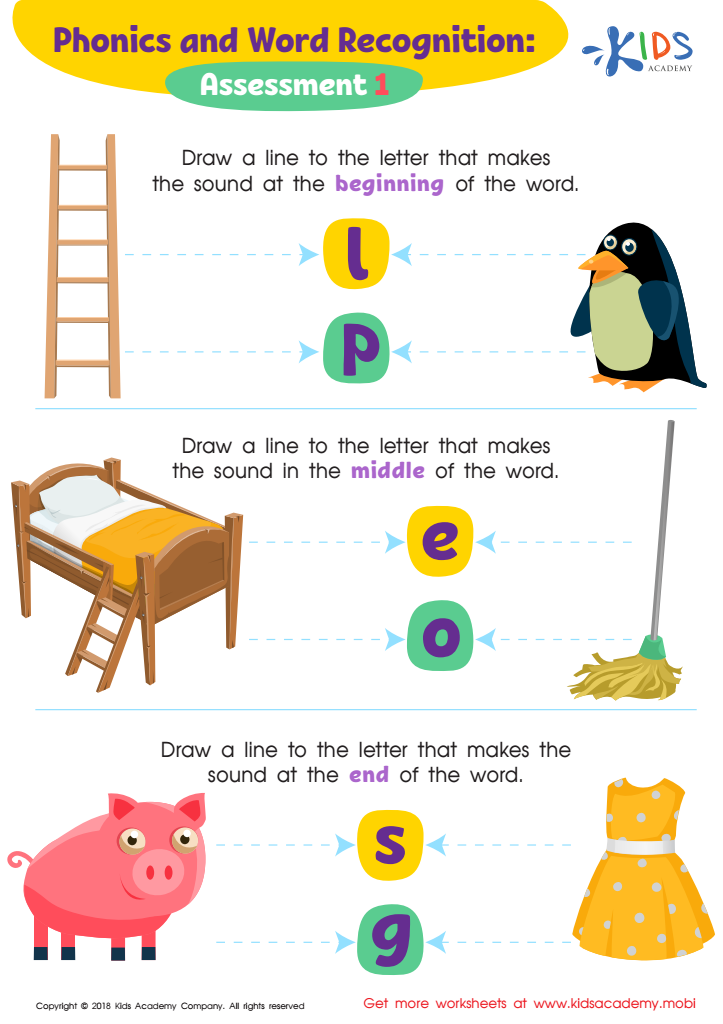

Phonics and Word Recognition: Assessment 1 ELA Worksheet
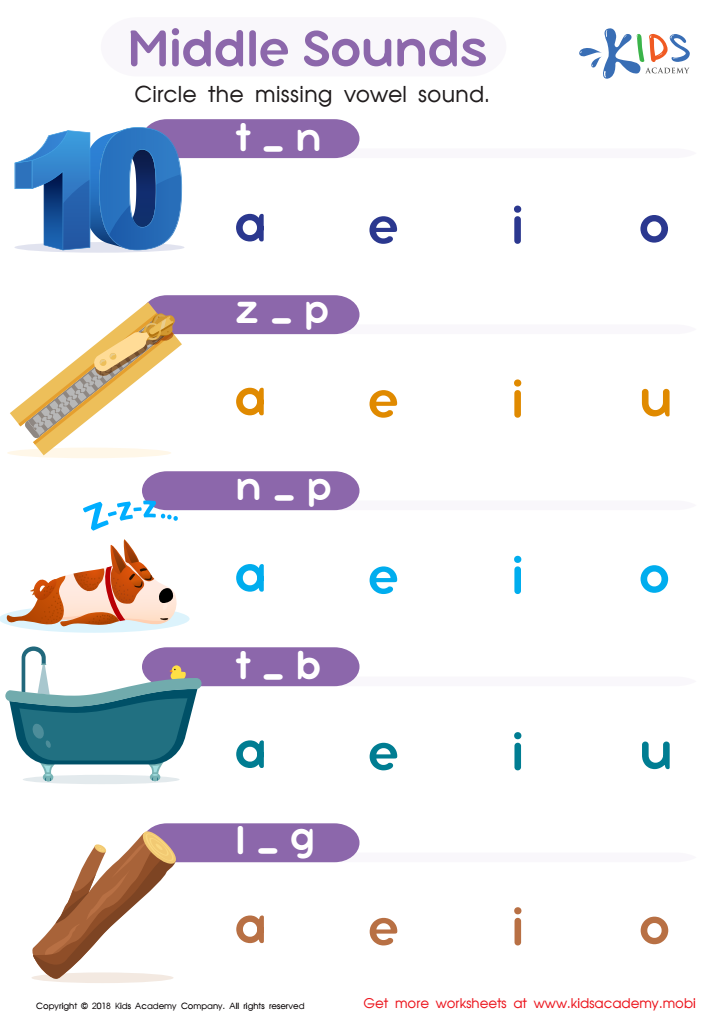

Middle Sounds Worksheet
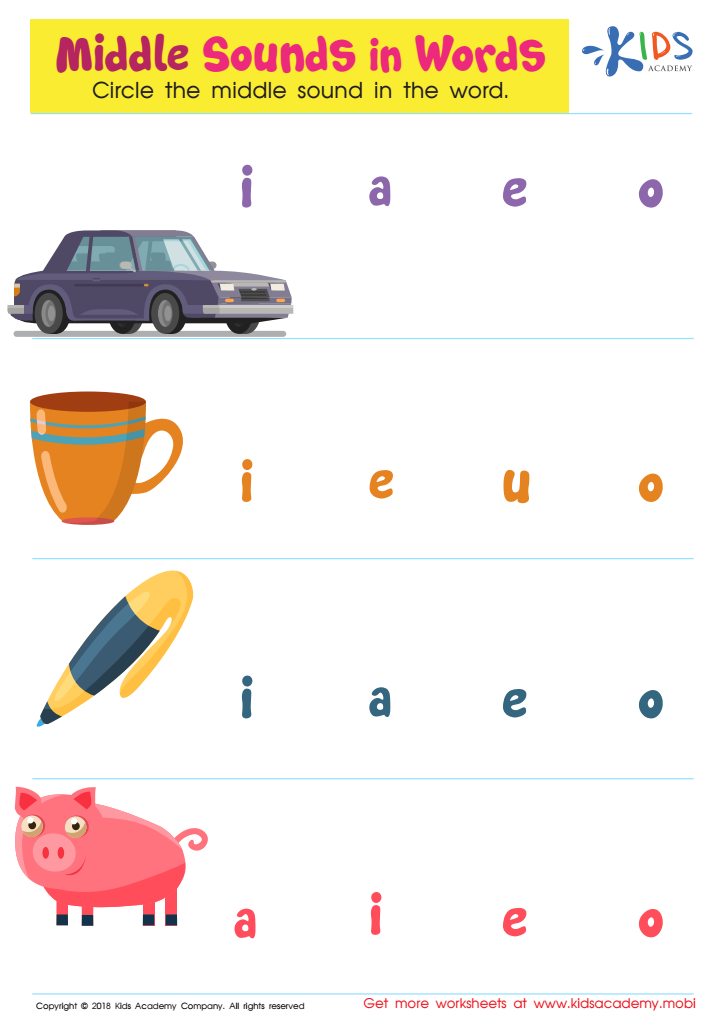

Middle Sounds in Words Worksheet
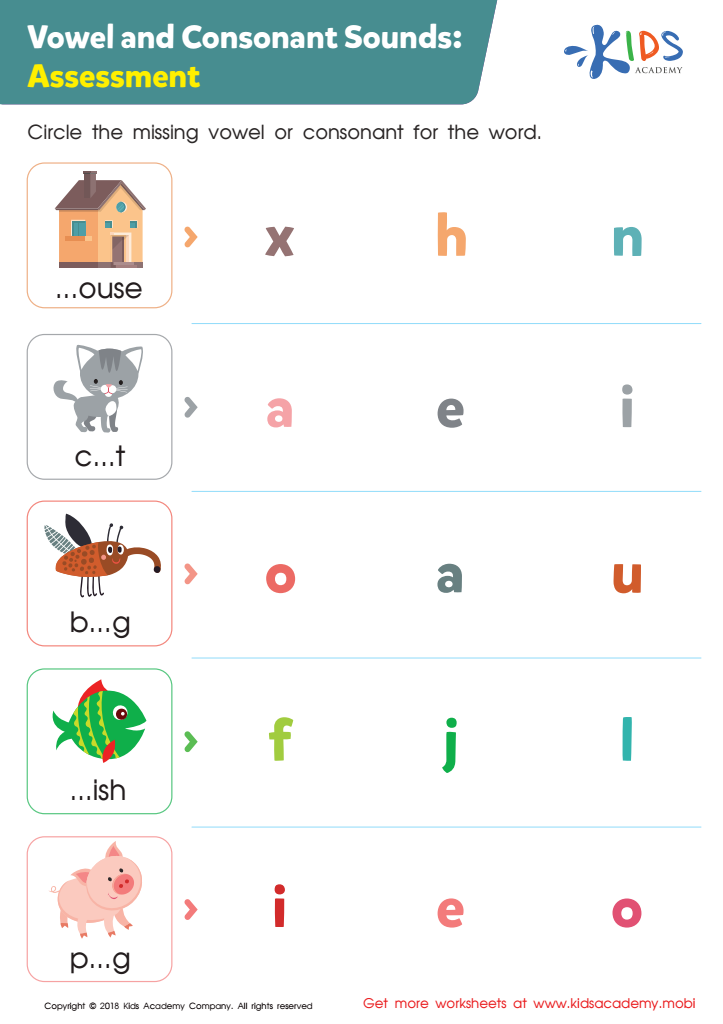

Vowel and Consonant Sounds: Assessment Worksheet
Understanding normal middle vowel development is essential for parents and teachers of children ages 3-6 because this period is critical for language acquisition and literacy skills. Middle vowels are vowels that occur in the middle of words and are often harder for children to pronounce and recognize, as they require stronger phonemic awareness.
During ages 3-6, children are in the emergent literacy stage. In this stage, they begin to understand sound-letter correspondences and word structures. Recognizing and accurately using middle vowels helps them decode words, which is vital for reading fluency and spelling accuracy. Early exposure to these sounds boosts their confidence and fosters a more sophisticated vocabulary.
Delayed or improper understanding of middle vowels can lead to reading difficulties, such as dyslexia, which can have long-term educational consequences. Early intervention ensures children stay on track with their peers and do not fall behind academically.
Additionally, correctly using middle vowels supports overall verbal communication, aiding in clearer speech and better understanding by others, which is invaluable for social development. Regular practice through playful and engaging activities can make learning middle vowels a natural and enjoyable part of daily life.
By focusing on this critical aspect of linguistic development, parents and teachers can lay a strong foundation for children's future success in reading and writing.

 Assign to My Students
Assign to My Students





